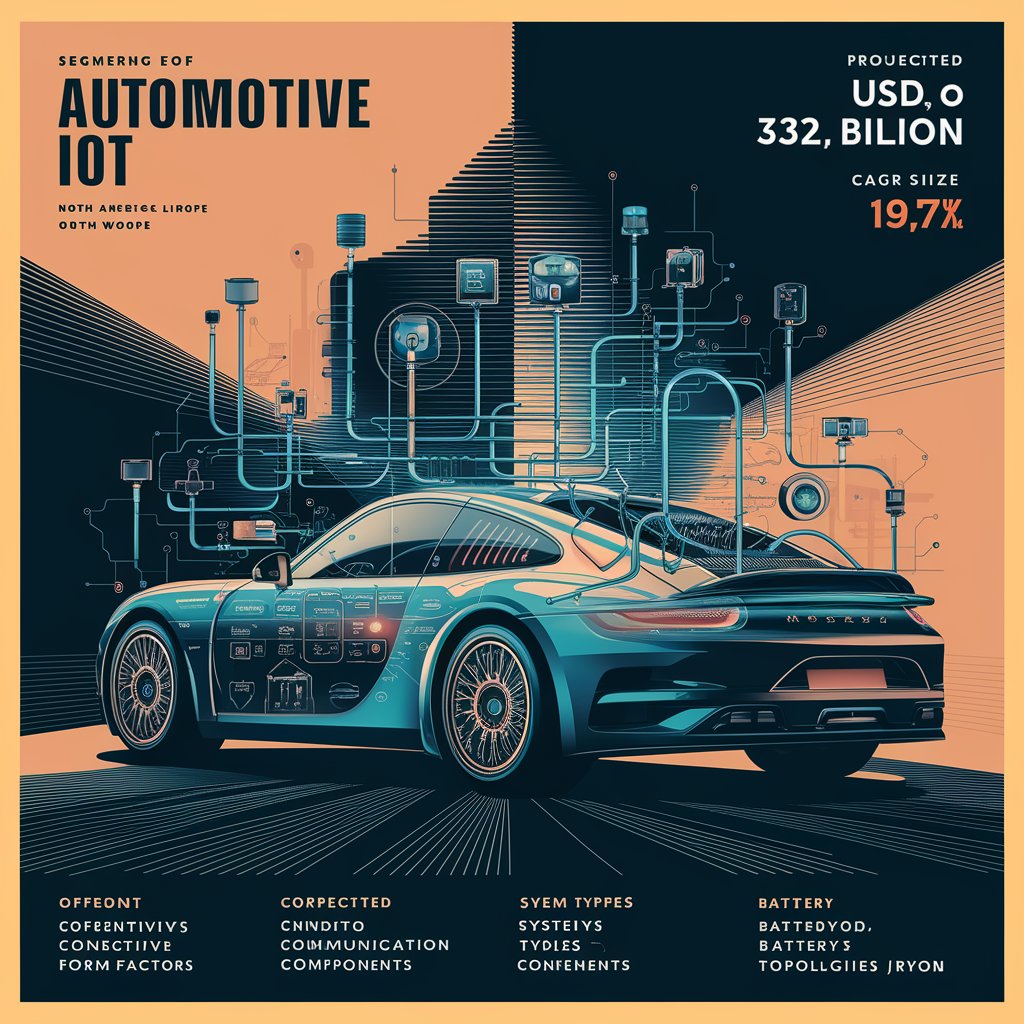The automotive industry is undergoing a revolutionary transformation with the advent of the Internet of Things (IoT). Automotive IoT, which involves embedding internet connectivity and intelligent systems into vehicles, is driving innovations that enhance safety, efficiency, and user experience. As the industry evolves, several key trends and technologies are shaping the future of automotive IoT. This article explores these trends, the impact of emerging technologies, and what lies ahead for the automotive IoT industry.
The global Automotive IoT Industry in terms of revenue was estimated to be USD 131.2 billion in 2023 and is poised to reach USD 322.0 billion by 2028, growing at a CAGR of 19.7% from 2023 to 2028. The new research study consists of an industry trend analysis of the market.
Technological Advancements
- Vehicle-to-Everything (V2X) Communication
Vehicle-to-Everything (V2X) communication is a cornerstone of future automotive IoT systems. V2X technology allows vehicles to communicate with other vehicles (V2V), infrastructure (V2I), pedestrians (V2P), and the network (V2N). This communication enhances situational awareness, improves traffic flow, and reduces accidents by providing real-time data on road conditions, traffic signals, and potential hazards.
- Advanced Driver Assistance Systems (ADAS)
ADAS are becoming increasingly sophisticated with IoT integration. Features such as adaptive cruise control, lane-keeping assist, and automated parking rely on IoT-enabled sensors and data analytics. These systems enhance vehicle safety and assist drivers in navigating complex driving environments, contributing to the gradual shift toward autonomous driving.
- In-Vehicle Infotainment Systems
Modern in-vehicle infotainment systems are evolving to offer more personalized and connected experiences. IoT technology enables seamless integration with smartphones, voice assistants, and cloud services, providing drivers and passengers with access to navigation, entertainment, and communication features. Future advancements will likely include enhanced AI-driven recommendations and improved connectivity options.
- Over-the-Air (OTA) Updates
Over-the-Air (OTA) updates are becoming a standard feature in automotive IoT. This technology allows manufacturers to remotely update vehicle software, including navigation maps, infotainment systems, and vehicle control modules. OTA updates streamline maintenance and enhance vehicle performance without requiring physical service visits.
Download PDF Brochure @
https://www.marketsandmarkets.com/pdfdownloadNew.asp?id=27200094

Automotive IoT Industry Emerging Trends
- Electrification and IoT Integration
As the automotive industry shifts toward electrification, IoT technology plays a crucial role in managing electric vehicles (EVs). IoT-enabled charging stations, battery management systems, and smart grid integration support the efficient operation and maintenance of EVs. Real-time monitoring and data analytics help optimize battery performance and extend the lifespan of electric powertrains.
- Autonomous Vehicles
The development of autonomous vehicles is closely tied to advancements in automotive IoT. Autonomous vehicles rely on a network of sensors, cameras, and connectivity solutions to navigate safely and efficiently. IoT technology provides the necessary data and communication infrastructure to support the development and deployment of self-driving cars.
- Smart Fleet Management
IoT technology is transforming fleet management by enabling real-time tracking, performance monitoring, and predictive maintenance. Fleet operators can leverage IoT data to optimize routes, manage fuel consumption, and reduce operational costs. The integration of AI and machine learning further enhances fleet management by providing actionable insights and automating decision-making processes.
- Enhanced Cybersecurity
As vehicles become more connected, cybersecurity is a growing concern. The automotive IoT industry is focusing on developing robust security measures to protect vehicles from cyber threats. Encryption, secure communication protocols, and regular software updates are essential components of a comprehensive cybersecurity strategy.
Impact on the Automotive Industry
- Improved Safety and Efficiency
The integration of IoT technology in vehicles enhances safety and operational efficiency. Real-time data from sensors and V2X communication systems helps prevent accidents, reduce traffic congestion, and improve overall driving experiences. Additionally, IoT-enabled systems contribute to more efficient vehicle maintenance and operation.
- Personalized User Experience
Automotive IoT provides a personalized driving experience by integrating with user preferences and habits. Infotainment systems, navigation, and driver assistance features can be tailored to individual needs, creating a more enjoyable and convenient driving environment.
- New Business Models
The rise of automotive IoT is giving rise to new business models and revenue streams. Companies are exploring opportunities in areas such as subscription-based services, data monetization, and digital marketplaces for vehicle-related applications and features.
- Regulatory and Ethical Considerations
The future of automotive IoT also involves addressing regulatory and ethical considerations. Data privacy, cybersecurity standards, and ethical implications of autonomous driving are key areas of focus for industry stakeholders and regulators.
The future of the automotive IoT industry is characterized by rapid technological advancements and transformative trends. From V2X communication and ADAS to electrification and autonomous vehicles, IoT is driving innovation and reshaping the automotive landscape. As the industry continues to evolve, the focus will be on enhancing safety, efficiency, and user experience while addressing cybersecurity and regulatory challenges. The integration of IoT technology into vehicles promises to revolutionize transportation, making it smarter, more connected, and more efficient.
